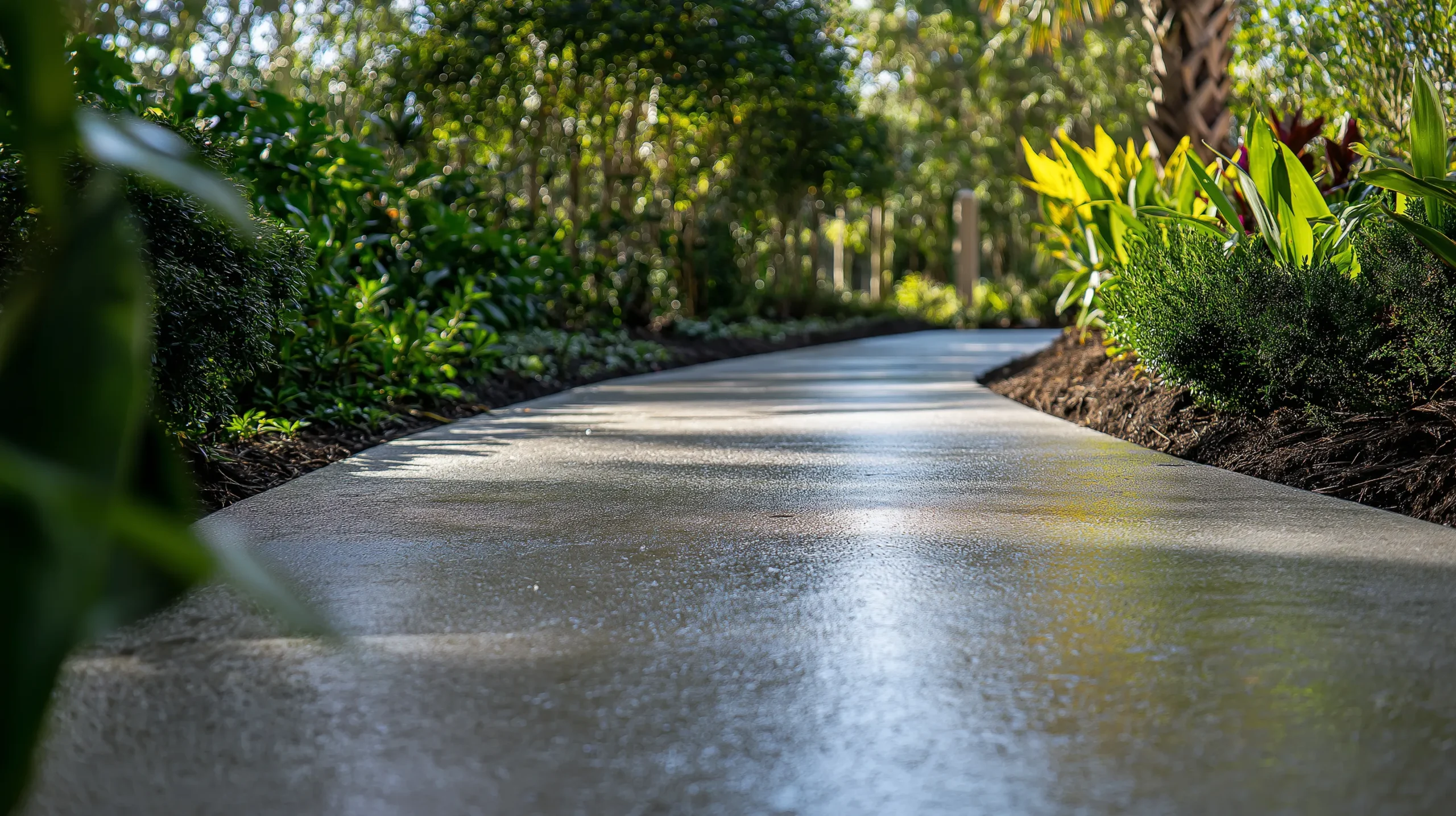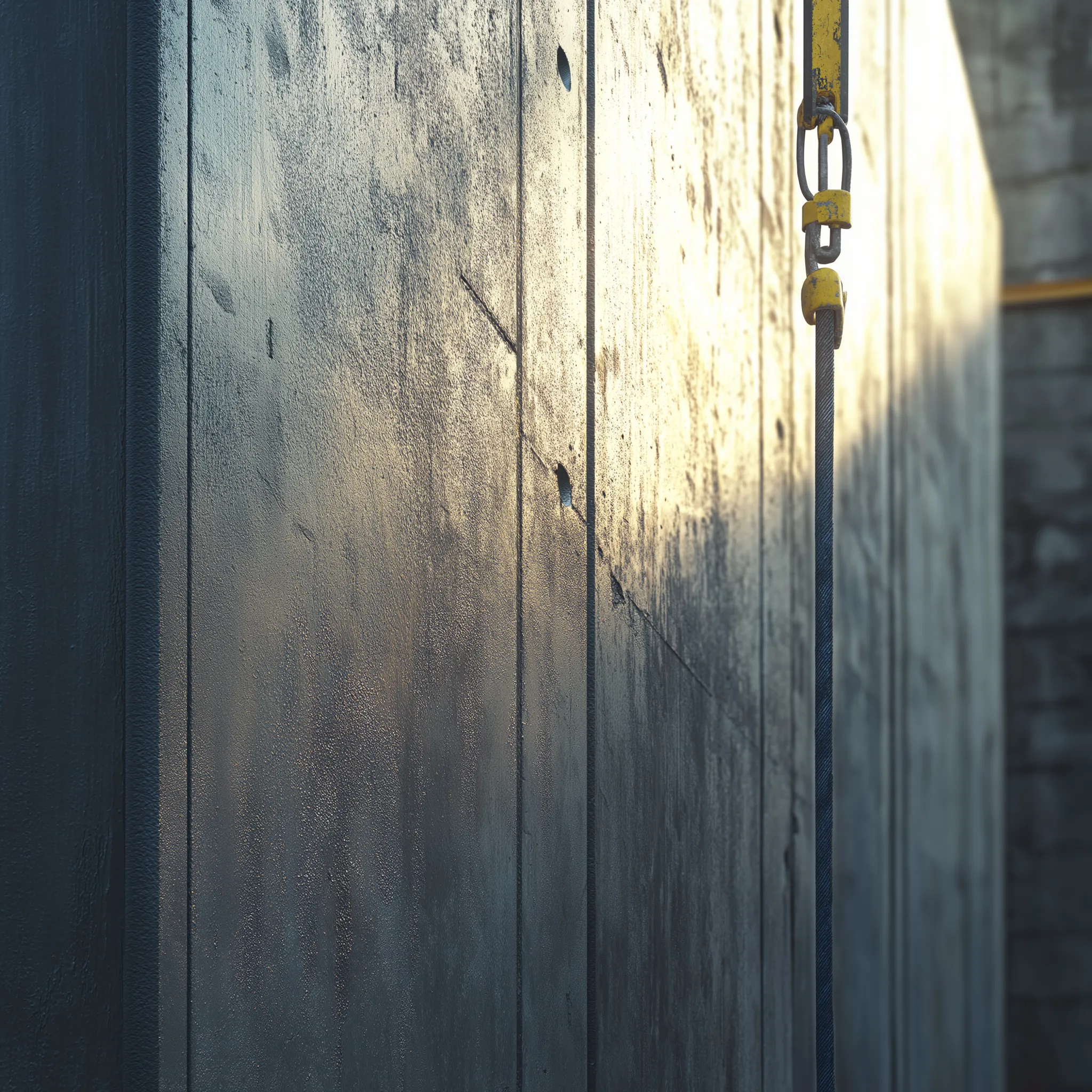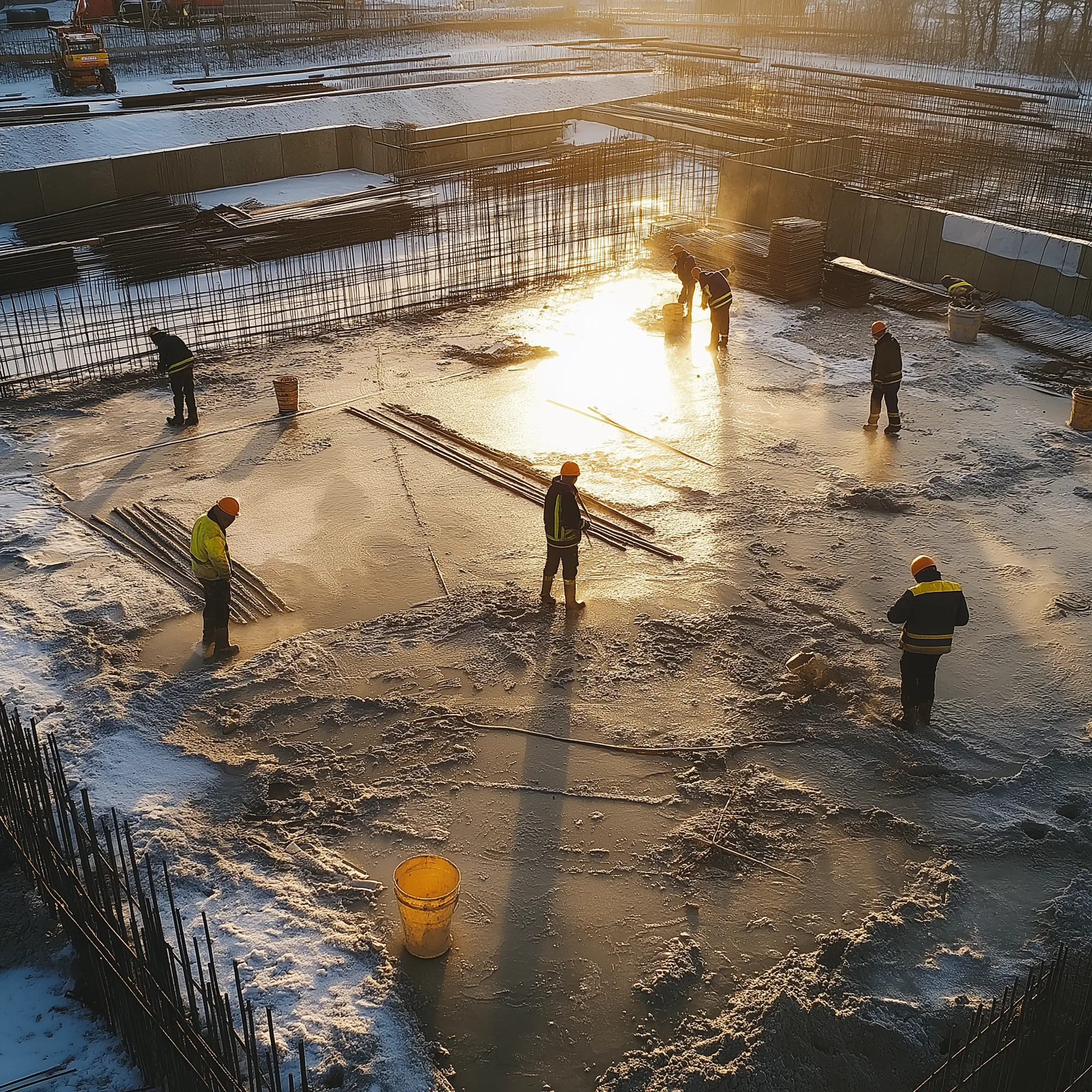Concrete surfaces that truly stand out often begin with expert craftsmanship and the right materials. Versa Etch, SpecChem’s industry-leading surface retarder, is designed to expose aggregate in freshly placed concrete without the need for plastic covering, helping you achieve the high-quality finish you desire. Let’s talk about how to prepare, apply, and finish with Versa Etch, emphasizing even distribution and providing tips for adapting techniques based on weather conditions. Let’s dive into these best practices to make your next project a success.
Step-by-Step Guide: Preparing, Applying, and Finishing with Versa Etch
Preparation
- Surface Cleaning: Start by thoroughly cleaning the concrete surface. Remove debris, dirt, and any existing sealers. A clean surface ensures that Versa Etch will bond effectively and provide the desired finish. Proper surface cleaning is essential for successful concrete etching and achieving a quality exposed aggregate look.
- Surface Moistening: Lightly moisten the concrete, particularly in hot weather, to extend the working time. Avoid puddles as excess water can dilute the retarder, which could affect the final concrete finish.
- Choosing the Right Versa Etch Product: Versa Etch comes in various grades to achieve different depths of etching. Choose the right grade based on your project’s requirements, whether you’re aiming for precise concrete etching or an exposed aggregate finish.
Application
- Uniform Application: Apply Versa Etch evenly using a low-pressure sprayer. Consistent application is crucial—uneven distribution can result in varied etching depths and an unprofessional look. Even for exposed aggregate projects, uniform application is key for consistent results.
- Mock-Ups: Before working on the main project, conduct mock-ups. This helps verify the application technique, dosage, and timing, ensuring you achieve consistent results on the main surface. Mock-ups are particularly useful when working on detailed concrete finishing tasks.
Weather Considerations
- Cold Weather: In cooler temperatures, concrete cures more slowly. Adjust the timing of applying Versa Etch accordingly, and wait a bit longer before rinsing off to ensure the retarder has worked its magic. This is critical whether you’re working with exposed aggregate or other concrete finishing techniques.
- Hot Weather: Hot weather accelerates curing. To avoid premature drying, apply Versa Etch early in the morning or later in the evening. Keep the surface moist but avoid pooling water. This helps in maintaining uniformity in concrete etching and exposed aggregate finishes.
Finishing
- Washing Off: Once the desired etch is achieved, typically 1-24 hours after application, use a power washer with a fan tip or a stiff brush to wash off the retarder. Always start with less pressure to avoid removing too much of the surface, especially when dealing with detailed concrete etching projects.
- Sealing: After the surface has dried, apply a concrete sealer to protect the etched finish. Sealing enhances durability and maintains the aesthetic quality of the exposed aggregate or any other concrete finish.
Tips for High-Quality Results
Even Distribution
Achieving an even finish starts with an even application. Whether you are working on a small patio or a large commercial slab, ensure the surface is covered uniformly by keeping the sprayer at a consistent height and moving it steadily. This ensures consistent results in both concrete etching and other concrete finishing techniques.
Mock-Ups
Creating mock-ups isn’t just an extra step; it’s essential. By testing a small, inconspicuous area or a separate sample, you ensure that your technique, timing, and product choice are spot on. This small investment of time can save you from costly mistakes on the main project, particularly when precision in concrete finishing is required.
Adapt to the Weather
Weather can significantly impact the application of surface retarders. Adjust your methods based on the temperature and humidity. In cold weather, curing times are longer, so be patient before washing off the retarder. In hot weather, work in cooler parts of the day and keep the surface moist to allow the retarder to work correctly. This adaptability is crucial whether you are doing exposed aggregate or detailed concrete etching.
Consistency and Reliability with Versa Etch
Consistent results are crucial for any concrete project. Many products on the market can be tricky to use, leading to inconsistent and unpredictable finishes. However, Versa Etch stands out as a user-friendly and reliable option. Its straightforward application process and dependable performance make it a go-to choice for professionals seeking high-quality and consistent results, particularly in concrete etching and finishing.
By following these best practices for preparation, application, and finishing, you can maximize the effectiveness of Versa Etch. Whether you are an experienced contractor or a DIY enthusiast, these tips will help you achieve a beautiful and durable exposed aggregate finish on your concrete surfaces.





